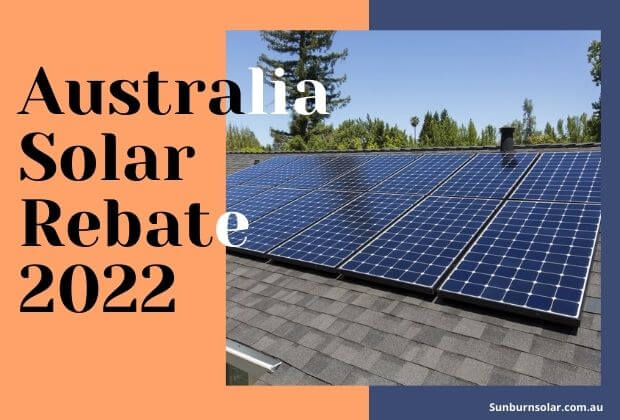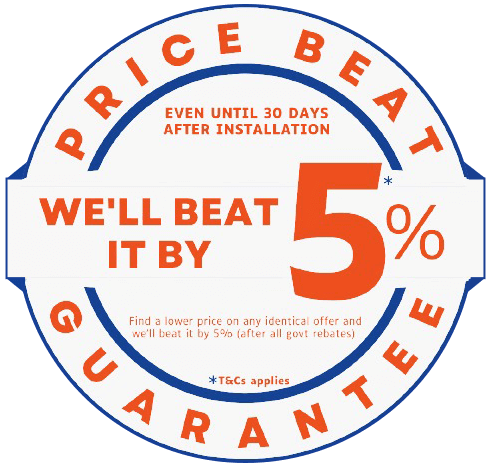Blog
 Feb17
Feb17
Australian Solar Rebate Phase Out In 2022
Fossil fuels are rapidly decreasing; therefore, it’s time to reconsider our options and switch to renewable sources of energy.
The sun is an infinite energy source that will never get exhausted, making it the best option for generating power. Therefore, we must begin to reduce our reliance on fossil fuels and maximize solar energy consumption.
In order to encourage people to use solar energy and shift to a sustainable environment, the Australian government introduced a solar panels rebate initiative.
However, as the phrase goes, “All good things must come to an end,” and this rebate is no exception. However, instead of ending the rebate initiative immediately, the government decided to phase it out gradually until December 31, 2030.
In this article, we are going to address every aspect of this rebate.
Understanding Solar Panel Rebate
The Australian solar panel rebate is a government-sponsored financial incentive to encourage people to switch to solar energy. In this, the government offers a reduction or rebate on the solar system purchased by the homeowner.
To put this in another way, a portion of the total cost of the solar system is paid by the government. That’s all there is to it. You purchase a solar system, and the government provides you with a “rebate.” Isn’t it wonderful?
However, there is a distinct incentive or rebate for each type of renewable solar product.
Who Sponsors The Rebate For Solar Panels?
It’s a common question that can pop up in anyone’s mind. Where does all the money for the rebate come from? Who sponsors this rebate? This rebate is sponsored by the Australian federal government to encourage people to switch to solar power and is available to all house owners in every state across the country.
In addition to this, now state-level refunds put in place by the state governments are also available.
The Small-scale Renewable Energy Scheme (SRES) in Australia offers a variety of panel rebates that range somewhat from state to state. Two programs are available from the Clean Energy Regulator:
- Large Scale Renewable Energy Scheme: It promotes investment in renewable power plants. These are essentially commercial solar subsidies.
- Small Scale Renewable Energy Scheme: It promotes solar panels as well as solar hot water systems. Residential solar panels subsidies are the most prevalent.
The rebates are provided in the form of certificates which are known as Small-scale Technology Certificates (STCs).
You can get your STCs in one of two ways:
- In exchange for an upfront financial reduction on your solar system. This can be done by allocating your STCs to the solar system installer.
- Another option is to sell them on your own.
The majority of people choose option one since it provides a cheaper solar panel system and, of course, eliminates the inconvenience of selling the STCs on your own.
Eligibility Criteria For Solar Panel Rebate
Fortunately, claiming the solar panel subsidy is actually rather simple. This implies that almost everyone in Australia may take advantage of the panel discount, which is only available for a limited time.
The following are the requirements for obtaining a federal government solar panel rebate:
- Own a solar system with a capacity of less than 100 kilowatts
- Be an Australian resident
- The solar system must be installed by a CEC-certified installer.
- The solar system’s components must be brand new.
Therefore, almost anybody may benefit from the federal government’s solar incentives.
How Much Solar Rebate Will Be Scaled Out In 2022?
The amount of a refund for an eligible system is determined by a number of factors, including:
- the year of installation,
- the capacity of the solar panels, and
- the location of the system in Australia.
It’s also reliant on STC value (Small-scale Technology Certificates), which fluctuates based on market demand.
The Australian government decided that rather than ending the payout abruptly, it would be better to phase it away gradually. Therefore, every year on January 1, the quantity of STCs awarded to a solar system decreases, reducing the compensation dramatically.
So, if we take a general example, in the month of January 2022, the subsidy on a 6.6kW system would have roughly dropped by $320 less than the rebate in the year 2021.
It’s a little that you’ll miss out on if you compare the savings that an efficient system will deliver over the course of its several years of service.
When Should You Get a Solar Power System?
There is always a good time to switch to solar. The sooner you decide to install the system, the earlier you’ll be able to reap the benefits out of it. Mainly, if you make the decision to install it now, you’ll be able to take advantage of the solar incentive before it expires. Furthermore, there are additional advantages to having solar energy in your house.
You will save money on your power bill and be able to spend it on other things that are important to you. It’s also worthwhile to take advantage of the current low cost of solar energy installation. It’s usually a good idea to seize an opportunity when it presents itself.
However, if you haven’t decided yet, there is no need for you to be concerned because the possibility of prices going up in the near future is negligible. Given the likelihood of a decrease in the cost of solar panel systems, you can switch to solar power whenever you are ready.
For more information or to get a quote for the installation of Solar Panels and Solar Power Systems, you can contact SunBurn Solar.
© 2024 sunburnsolar.com.au. All rights reserved.


